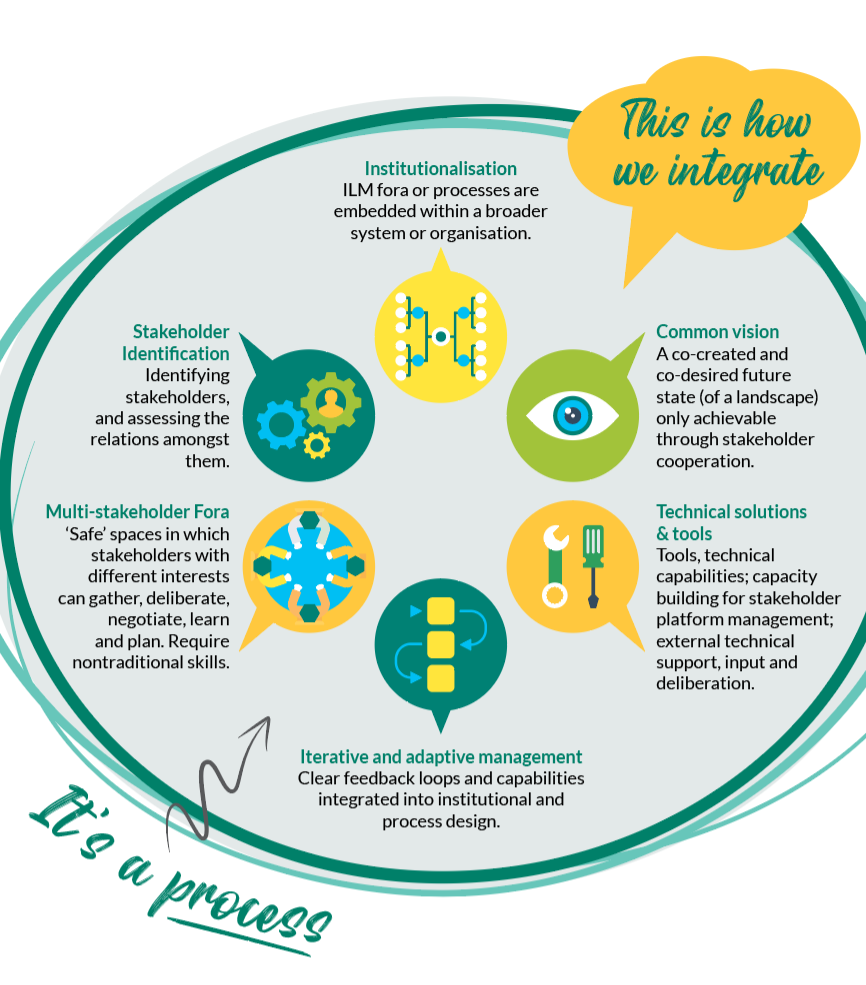We then look at the Landscapes For Our Future (LFF) approach to ILM – the initial hypothesis that we proposed that allowed us to then explore the concept across six dimensions: stakeholder identification, multi-stakeholder fora, common vision, institutionalization, adaptivity and tools.
Here, we will only provide a brief introduction to the six dimensions. Five more Landscapes In Practice briefs will accompany this introduction, exploring each of the dimensions in greater detail. There will be no brief on ILM tools – these were initially defined as a separate dimension but, due to the contextual nature of this topic, it is better addressed as an aspect of each of the other five dimensions.

Key messages
- Integrated Landscape Management (ILM) is a process for fostering co-created sustainability and resilience in landscapes through adaptive, inclusive and integrating strategies.
- Lack of integration in Natural Resources Management (NRM) is a major problem. This is fundamentally an institutional problem that requires a new approach to address the challenges of natural resource management. •
- In the literature, there is a high degree of consistency around what comprises a ‘landscapes approach’. We identify five areas where there is broad agreement: they acknowledge that landscapes are socialecological systems; they typically call for high levels of stakeholder engagement, require high degrees of adaptivity, acknowledge landscape multifunctionality, or call for multi-, inter or trans-disciplinarity.
- Based on experience and the literature, the Central Component of the Landscapes For Our Future programme hypothesized that ILM comprised six highly interconnected dimensions:



